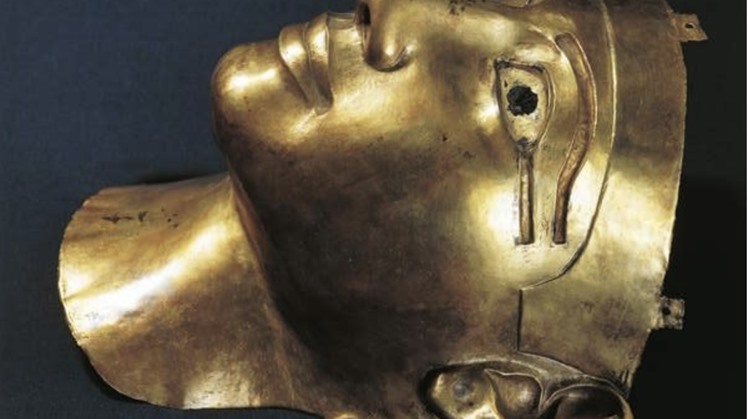The Egyptian Museum is the oldest archaeological museum in the Middle East, and it includes the largest collection of ancient Egyptian antiquities in the world. The museum displays a large collection that extends from the pre-dynastic period to the Greek and Roman eras. Among the pieces displayed in the museum are the golden mask of King Sheshenq II, the era of transition. The third, Dynasty 22, which was found in the tomb of "Sheshenq II - Psusennes I" in Tanis, "San El-Hagar" in the eastern Delta.
The era of the third transition was generally known as a period of decentralization and weakness. By the end of his reign, Ramesses the Eleventh "1099-1069 BC" - the last king of the New Kingdom - was no longer the de facto ruler of all of Egypt. After his death, a branch of the Ramesses was taken from Tanis. San Hajar is currently in the north-east of the Delta as their capital.
Although the reign of these kings who made up the Twenty-first Dynasty "1069-945 BC" was recognized throughout the country, Upper Egypt is in fact under independent rule in the hands of the High Priest of Amun in Luxor, who at the same time held the highest military position. Historians describe this period as a theocracy, because the priests of the Lord Amun are the highest authority in the country more than the king himself.
Sheshonq I, the founder of the Twenty-Second Dynasty "around 945-715 BC", came from a powerful Libyan family of Bubastis, "present-day Tell Basta" in the eastern Delta, which he made as his capital, and he succeeded in bringing the country under his control and undertook military campaigns. Successful in the east, "the region of Palestine, Lebanon and Syria," as he carried out huge construction projects, but unfortunately this success in the short term could not reflect the general trend of the state of decentralization that prevailed in Egypt, and after his death, the control of the central government over the country began to decline.
By the time of the Twenty-Third Dynasty, many regions were not only completely independent, but their rulers actually considered themselves kings, wearing royal insignia and carrying royal titles. In the conquest of Egypt, in the end the twenty-fifth Nubian family occupied the country until it reached Memphis under the rule of King Bey "747 - 716 BC", to whom the rest of the kings of the family attribute themselves to him, and this era prevailed with great prosperity as art and architecture flourished and construction was Many great installations.
 Sun, Jun. 11, 2023
Sun, Jun. 11, 2023